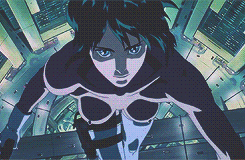The groundbreaking anime film, "Ghost in the Shell," has left an indelible mark not only on the world of animation but also on technology. Released in 1995, this cyberpunk masterpiece by Mamoru Oshii explores themes such as artificial intelligence, human enhancement through technology, and the blurred lines between the physical and digital worlds.
In "Ghost in the Shell," we see a future where humans can upload their consciousness into machines or even other people's bodies. This concept has sparked numerous discussions about the potential for mind-uploading technologies like brain-computer interfaces (BCIs) and artificial intelligence to merge with human brains, leading to advancements such as Elon Musk's Neuralink project.
Moreover, "Ghost in the Shell" also touches upon issues related to cybersecurity and data privacy. The film raises questions about who owns our digital identities and how vulnerable they are to hacking or manipulation by malicious entities. These concerns have become increasingly relevant with the rise of smart devices and the Internet of Things (IoT), making it crucial for tech companies and governments alike to address these issues head-on.
In conclusion, "Ghost in the Shell" serves as a thought-provoking exploration of technology's impact on humanity. Its visionary take on AI, human enhancement, and cybersecurity challenges us to consider how far we are willing to go in our pursuit of progress while ensuring that we maintain control over it. As we continue to innovate and push the boundaries of what is possible, let us remember the lessons learned from this iconic film – that with great power comes great responsibility.
